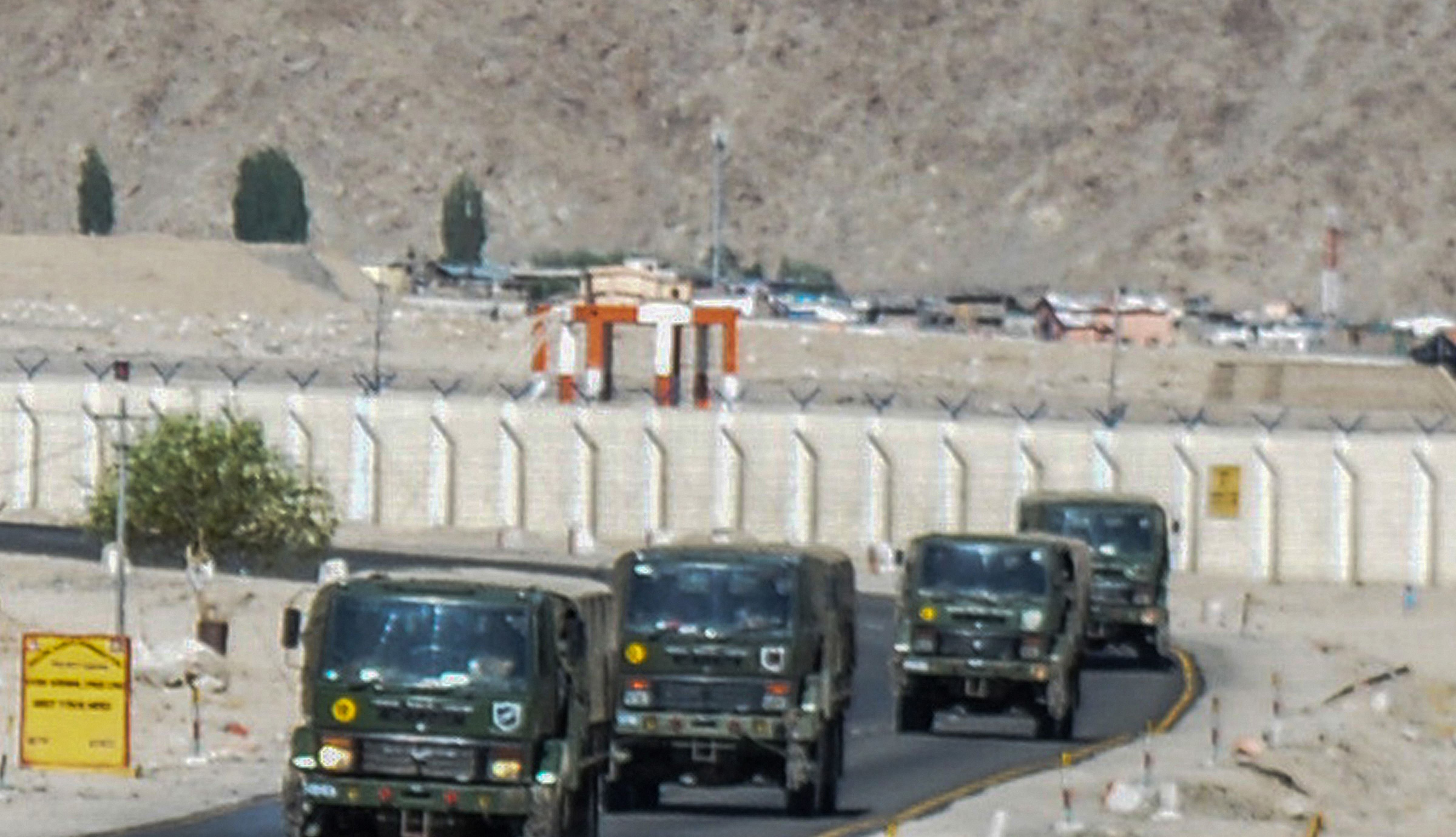
India on Thursday asked China to “sincerely” complete the process of withdrawal of its soldiers both from the face-off points along the disputed boundary between the two nations as well as from the “depth” areas on its side “at the earliest”.
New Delhi asked Beijing to make it sure that Chinese People’s Liberation Army (PLA) “sincerely” works with the Indian Army “for complete disengagement and de-escalation and full restoration of peace and tranquillity in the border areas at the earliest as agreed to by the Special Representatives” of the two governments on July 5.
With the Indian Army now suspecting a deliberate attempt by the Chinese PLA to slow down the process of withdrawal of troops from the face-off scenes in eastern Ladakh, the Ministry of External Affairs (MEA) in New Delhi reminded Beijing that the maintenance of peace and tranquillity in the border areas was the basis of India-China bilateral relationship.
New Delhi is worried as the Indian Army noticed that the Chinese PLA had not yet withdrawn troops from the northern bank of the Pangong Tso lake as well as several other face-off scenes along the Line of Actual Control (LAC) – the de facto boundary between the two nations. The PLA also did not thin out deployment of nearly 40,000-45,000 troops in the “depth” areas on China’s side of the LAC.
Anurag Srivastava, the MEA spokesperson in New Delhi, stated that the “conduct” of the Chinese PLA this year, including “the deployment of large body of troops and changes in behaviour, accompanied by unjustified and untenable claims,” had been “in complete disregard of all the mutual agreements”. “We have also made it clear that India is fully committed to observing and respecting the LAC (with China) and that we will not accept any unilateral attempts to change the status quo along the LAC,” Srivastava told journalists on Thursday.
The “disengagement” process started after the Senior Commanders of the Indian Army and the Chinese PLA had agreed upon it after three rounds of meetings on June 6, 22 and 30. A two-hour-long phone-call between National Security Advisor Ajit Doval and Chinese Foreign Minister Wang Yi – the Special Representatives of India and China for boundary negotiations and strategic consultations – on July 5 added momentum to the process. The senior military commanders of the two sides had another round of talks on July 14, when they had also discussed “further steps to ensure complete disengagement”.
“The two sides have agreed during the conversation of the Special Representatives to work towards complete disengagement of the troops along the LAC and de-escalation from India-China border areas for full restoration of peace and tranquillity,” said the MEA spokesperson. He also said that the senior diplomats of the two sides would hold another meeting of the Working Mechanism for Consultation and Coordination on India-China Border Affairs (WMCC) soon.
The latest stand-off, which started on May 5, took New Delhi’s relations with Beijing to a new low, particularly after the violent clash between the Indian and Chinese soldiers in Galwan Valley on June 15. The Indian Army lost 20 of its soldiers in the clash. The Chinese PLA too suffered casualties, but it did not make public the number of its soldiers, who were injured or killed in the violent face-off.
New Delhi is worried about the continuing stand-off on the northern bank of the Pangong Tso (lake), where the Chinese PLA deployed soldiers and built structures at the “Finger 4” area, thus denying access to Indian Army to areas up to its earlier patrolling limit – the “Finger 8”. Sources said that although the PLA had apparently thinned out some of its troops and vehicles from “Finger 4”, the numbers were not significant.
China also showed no sign of withdrawing the large number of troops it deployed over the past few weeks in the rear areas on its side of its disputed boundary with India – flouting the 1993 bilateral agreement, which required each side to “keep its military forces in the areas along the Line of Actual Control (LAC) to a minimum level”.
